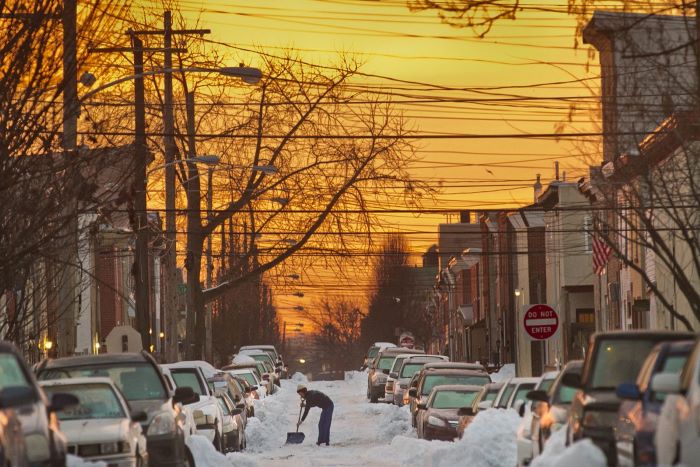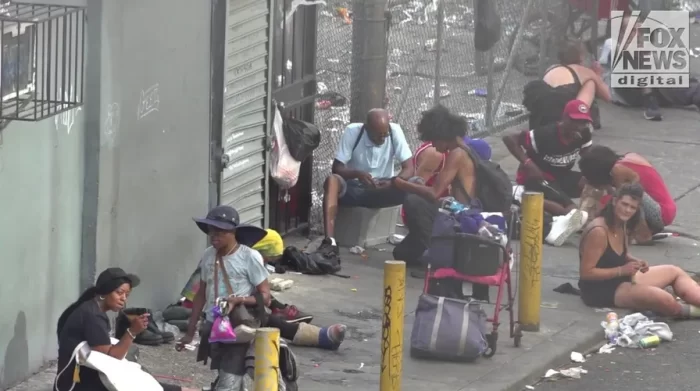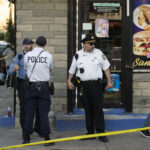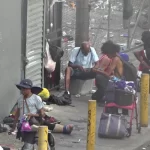In the heart of Philadelphia’s Kensington neighborhood, the open air drug trade has spiraled into a full-blown crisis. Just five miles from the iconic Liberty Bell, drug users lay passed out on the streets, shooting up heroin and fentanyl in plain view without a care in the world. The situation has become so dire that even school children bear witness to the depravity as they make their way to class each morning. In this article we talk about Philadelphia Intensified Battle Against Open-Air Drug Markets in Kensington.
As a longtime Kensington business owner laments, “You see people shooting up like in front of everybody, in front of the school. In the morning, kids walk by, and they don’t care. They just keep doing it. They’re using the bathroom in front of the kids in the morning. Like, I’ve never seen that before. There’s something that shouldn’t be happening.”
The Roots of Kensington’s Opioid Epidemic

Kensington’s reputation as a haven for drug use, homelessness, and crime stretches back decades. But the latest opioid scourge gripping the neighborhood is the deadliest yet. A key culprit is xylazine, an animal tranquilizer known on the streets as “tranq” when mixed with fentanyl. According to law enforcement, xylazine is now present in 90% of Philadelphia’s drug supply.
This potent combination induces a zombie-like state in users, suppressing breathing and causing severe wounds that complicate overdose reversal. Its proliferation has transformed Kensington into an open-air drug market rife with addicts in the throes of horrifying tranq dope sickness.
The scale of tragedy is staggering. Opioid overdoses have increased annually in Philadelphia since 2018. In 2021 alone, the city lost 1,276 lives to unintentional fatal overdoses, a 5% spike from the prior year.
A New Mayor, A New Approach
Enough was enough. Enter Cherelle Parker, Philadelphia’s newly-elected mayor and first Black woman to hold the office. Parker has made reclaiming Kensington from the scourge of addiction a top priority, turning away from the harm reduction strategies favored by previous administrations.
Last week, in a high-profile raid, police and city workers cleared a massive encampment of drug users dwelling beneath a bridge near the Allegheny train station. The operation aimed to dismantle the epicenter of Kensington’s open air drug trade, with the city providing advance notice to remove tents and structures “posing public health and safety hazards.”
According to reports, 28 people were pulled off the streets and into treatment ahead of the Wednesday deadline to vacate the encampment. While critics argue this merely displaced Kensington’s addiction crisis rather than solving it, the visible impact has inspired cautious hope among residents and community leaders.
“There was always people sleeping or just laying down or shooting drugs up, so at least everything is more safe now for you to walk around,” said one local.
Elizabeth Ayala, who runs a Hispanic community counseling service providing mental health support in Kensington, lauded Parker’s initial efforts while acknowledging much work remains. “We need to make sure our community is still safe. So that’s why we are here to try to finally see the change with the new mayor. So, I think she’s doing a great job so far. They just started, so we have to see more to come. So, hopefully, the community will be more safe, especially for the elderly and for our children.”
A Shift Away from Harm Reduction
Parker’s crackdown marks a stark departure from Philadelphia’s previous tack of expanding harm reduction programs under former mayor Jim Kenney. His administration invested heavily in measures like distributing the opioid overdose reversal drug naloxone, fentanyl testing strips, and millions of clean syringes.
Kenney also favored diverting those arrested for low-level drug crimes away from the criminal justice system and into treatment programs rather than jail. But many Kensington residents felt such an approach was too soft and enabled the rampant drug use overtaking their neighborhood.
“I don’t think that’s the way. That’s why they get overdosed because they make it too easy for them. I don’t think that’s the right thing to do. The right thing to do is to get them to rehab,” argues Elvys Amancia, the Kensington business owner witnessing the depths of depravity each day.
A National Crisis
While Philadelphia represents an extreme example, the United States as a whole continues battling an unprecedented overdose epidemic. However, there are faint glimmers of hope amid the devastation.
New CDC data reveals the number of fatal U.S. overdoses dipped slightly in 2022 to around 107,500 deaths. This marked only the second annual decline in over three decades as illegal fentanyl flooded the nation’s streets, becoming the driving force behind the spiraling body count.
Developed as a potent painkiller for terminal illnesses like cancer, fentanyl’s cheapness and extreme potency made it a prime additive for drug dealers to spike the illicit heroin and pill supply. What began with fentanyl being injected has now expanded to users smoking the lethal substance or ingesting counterfeit pills laced with it.
Law enforcement seizures of such fentanyl-laced pills have skyrocketed from 44 million in 2022 to over 115 million just last year alone. Compounding the hellish crisis, the tranq dope compound ravaging Kensington has emerged as the latest frontier in America’s war against addiction.
A Long Road Ahead
While progress remains frustratingly slow on the national level, Philadelphia’s new mayor has made bold moves to reclaim the city’s most afflicted neighborhood from the clutches of opioid addiction. Mayor Parker’s clearance of Kensington’s largest open air drug encampment marks a pivotal shift from her predecessor’s harm reduction strategy.
By coupling visible enforcement with increased access to addiction treatment, Parker aims to restore a sense of public safety and human dignity to Kensington’s streets. Longtime community members, haunted by the open air depravity they’ve been forced to witness, are cautiously optimistic that real change could finally be on the horizon.
As social worker Elizabeth Ayala pleads, “we need to make sure our community is still safe” – not just for adult residents and business owners, but for the children of Kensington as well. No longer must they be subjected to the traumatic sights and realities of a neighborhood gripped by addiction as they make their way to school each morning. Philadelphia’s war on Kensington’s drug scourge has begun in earnest. I sincerely hope you find this “Philadelphia Intensified Battle Against Open-Air Drug Markets in Kensington- Inside the Efforts” article.

Skylar Lacey, a Travel and Tourism Management graduate from Temple University, offers 5 years of experience in travel writing and airport logistics at PhiladelphiaAirport.net. Her expertise helps travelers make the most of their journeys through Philadelphia International Airport. Connect with her on Instagram for more travel tips and insights.







